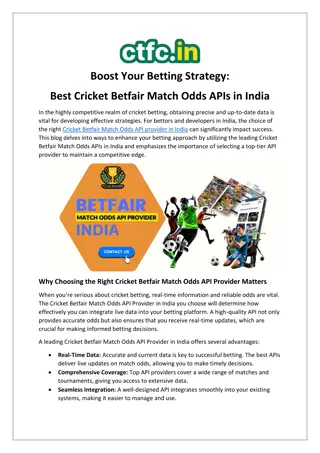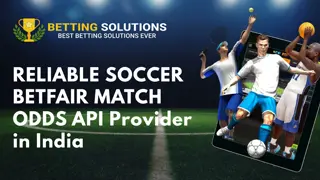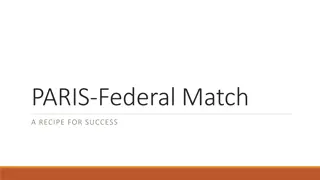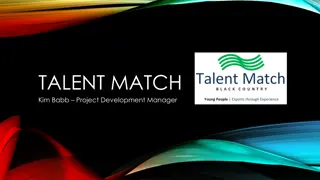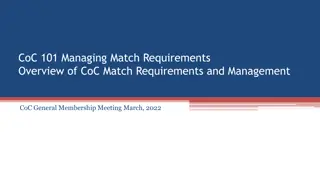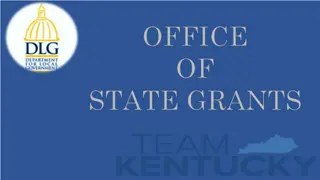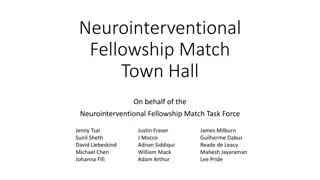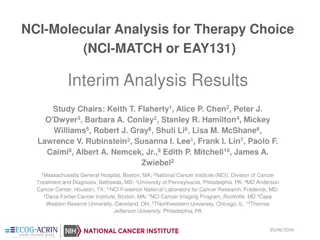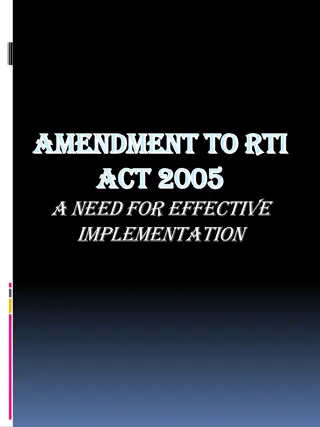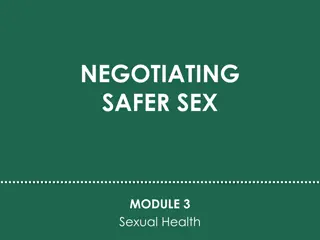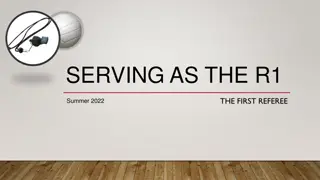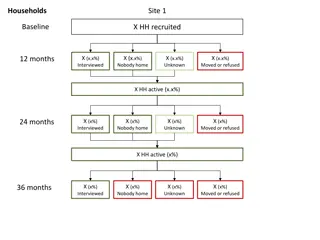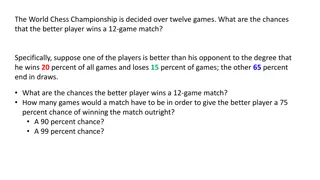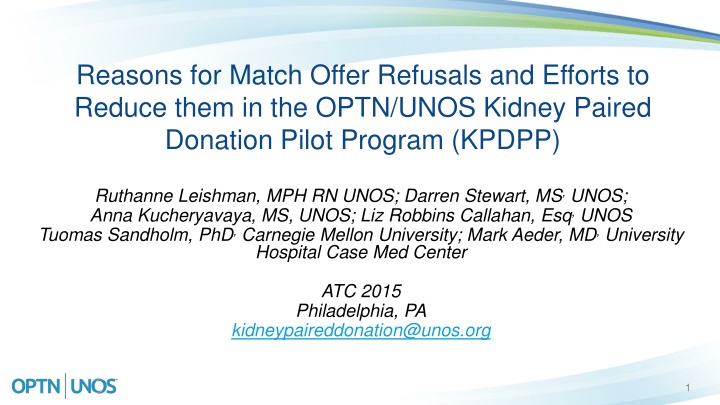
Match Offer Refusals in Kidney Paired Donation Program
Explore the reasons behind match offer refusals and efforts to minimize them in the OPTN/UNOS Kidney Paired Donation Pilot Program. Insights from the analysis presented at a transplant congress shed light on strategies to enhance the match success rate and facilitate more transplants in this innovative program.
Download Presentation

Please find below an Image/Link to download the presentation.
The content on the website is provided AS IS for your information and personal use only. It may not be sold, licensed, or shared on other websites without obtaining consent from the author. If you encounter any issues during the download, it is possible that the publisher has removed the file from their server.
You are allowed to download the files provided on this website for personal or commercial use, subject to the condition that they are used lawfully. All files are the property of their respective owners.
The content on the website is provided AS IS for your information and personal use only. It may not be sold, licensed, or shared on other websites without obtaining consent from the author.
E N D
Presentation Transcript
Reasons for Match Offer Refusals and Efforts to Reduce them in the OPTN/UNOS Kidney Paired Donation Pilot Program (KPDPP) Ruthanne Leishman, MPH RN UNOS; Darren Stewart, MS,UNOS; Anna Kucheryavaya, MS, UNOS; Liz Robbins Callahan, Esq,UNOS Tuomas Sandholm, PhD,Carnegie Mellon University; Mark Aeder, MD,University Hospital Case Med Center ATC 2015 Philadelphia, PA kidneypaireddonation@unos.org 1
The Joint Annual Congress of the American Society of Transplant Surgeons and The American Society of Transplantation Ruthanne Leishman RN, MPH OPTN KPDPP Program Manager UNOS, Richmond, VA, USA I have no financial relationships to disclose within the past 12 months relevant to my presentation AND My presentation does not include discussion of off-label or investigational use I do not intend to reference unlabeled/unapproved uses of drugs or products in my presentation.
Acknowledgments This analysis reflects work performed on behalf of and in conjunction with the OPTN Kidney Transplantation Committee and the Kidney Paired Donation Work Group. This work was supported wholly or in part by Health Resources and Services Administration contract 234-2005- 370011C. The content is the responsibility of the authors alone and does not necessarily reflect the views or policies of the Department of Health and Human Services, nor does mention of trade names, commercial products, or organizations imply endorsement by the U.S. Government.
Background The OPTN KPDPP was launched in 2010 Algorithms search for 2-way/3-way/chain exchanges The number of pairs entered, matches found, and transplants continues to increase Match Success Rate ~8.3% Match Success Rate = Transplants/Matches offered Strategies for improving Match Success Rate
Cumulative Transplants Facilitated through April 2015 160 140 140 120 100 79 80 60 40 27 17 20 2 0
Match Success Rates Sept 2011 - Sept 2014 Rolling 12-month average (All Matches Resulting in Tx Including Repairs / All Matches Identified by Algorithm) 16.0% 15.2% 14.8% 12.6% 14.0% 13.0% 12.4% 10.6% 12.0% 10.0% 9.6% 9.4% 9.0% 8.3% 8.0% 7.1% 6.3% 6.0% 5.4% 4.0% 3.5% 2.0% 0.0% 6 12 MONTH ROLLING AVERAGE% OVERALL RATE
Methods OPTN data from Jan 2014 - Sep 2014 Analyzed 332 match offers that did not result in transplant Multiple refusal reasons for individual match offer percentage not equal to100% Repaired matches were excluded 7
Types of match declines 2-way exchange: 2 matches 1. Match 1 Direct decline Candidate1 Blood type B Donor 1 Blood type A 2. Match 2 Indirect decline Accepted but exchange fell through Donor 2 Blood type B Candidate 2 Blood type A 8
Results Indirect declines: 52% (n=172) Direct declines: 48% (n=160) 9
Categories of Direct Declines 34.4% Donor-related 32.6% Crossmatch-related 21.9% Candidate-related 13.8% Other Match Runs: Jan-Sep 2014 10
Crossmatch-related refusal reasons Match Runs: Jan-Sep 2014 (n=52) Virtual +crossmatch can be due to: Non-required donor antigens not entered Non-required donor antigens not screened Candidate unacceptable antigens not entered 34.6% 65.4% Positive Virtual Crossmatch Positive Physical Crossmatch 11
Crossmatch decline follow up Match Runs: Jan-Sep 2014 Percentage of follow up related to DP/DQ versus all other unacceptables Percentage of crossmatch related declines with and without follow up 38.5% 40.0% 61.5% 60.0% Follow up No follow up DP/DQ unacceptables Others 12
Donor-related refusal reasons Match Runs: Jan-Sep 2014 (n= 60) Matched donor age 35.3% Matched donor medical history 31.4% Matched donor height/weight/BMI 13.7% Paired donor declined to donate 9.8% Matched donor vessels 9.8% Other matched donor related reason 17.6% 13
Candidate-related refusal reasons Match Runs: Jan-Sep 2014 (n=37) Cand. in other KPD program pending match 43.2% Cand. transplanted or offer in progress 32.4% Candidate ill, unsuitable, or unavailable 16.2% Other candidate related reason 8.1% 14
Strategies for improving Match Success Rate Donor Specific Antigen related DQA screened as of April 29th New Histocompatibility requirements policy Approved, pending programming Donor DPB, DQA and DQB required Repeat candidate antibody screening and update every 90 days 15
Strategies for improving Match Success Rate Donor and Candidate related Candidate and Donor choices questions Allows entry of maximum donor age, BMI and other factors Donor pre-select option Donor pre-select required on candidates with CPRA 90%+ Easy inactivation/reactivation of candidate/donor pairs 16
Strategies for improving Match Success Rate Overall Changes to optimization algorithm Such as failure aware matching: Dickerson, Procaccia & Sandholm EC-13] and the FUTUREMATCH framework [Dickerson & Sandholm AAAI-15] 17
Summary Failed exchanges due to: Donor specific antibodies Donor age, medical history, or size A candidate having another transplant opportunity Strategies for improving Match Success Rate Policies and tools to increase efficiency more matches move forward Individualized program support 18
Thank you! 19






